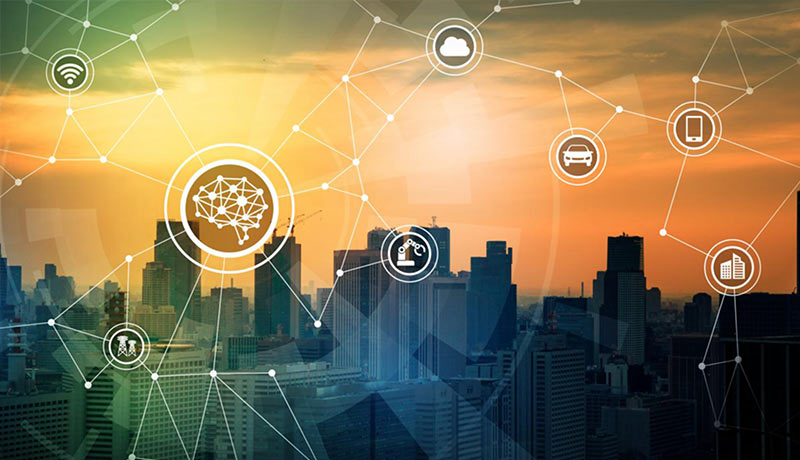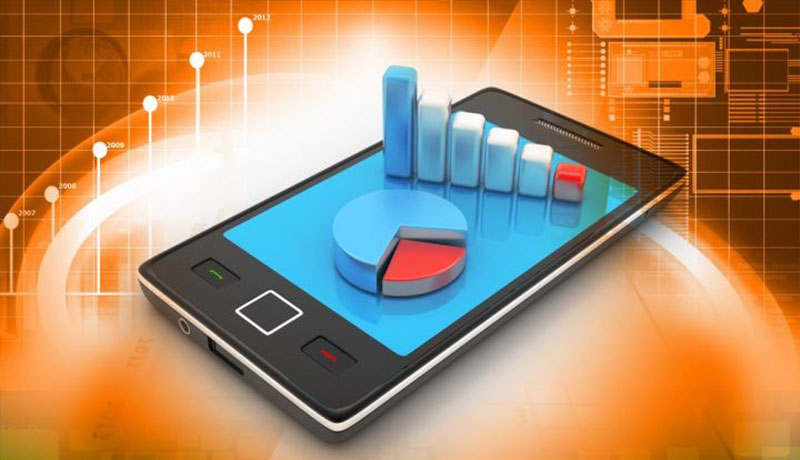
By Dr.Houssem Jemili, Partner at Bain & Company Dubai, Leader Digital Tech Practice ME, & Truc Mai Dupont Vohong, Vice President, Digital Partnerships, Bain & Company Paris.
Necessity being the mother of (re)invention, the Covid-19 crisis has dramatically accelerated the pace of digital transformation. As companies race to develop new digital capabilities in an effort to build resilience and retool for the post-pandemic world, keeping up with fast-moving technology trends is critical.
“In the context of rapidly changing markets, rising geopolitical tensions and the Covid-19 pandemic, tech companies had to face unique challenges in the past year. However, the key to overcome this is for companies to reposition their core businesses and extend their capabilities into new domains. While it might be challenging short term, tech leaders are well aware of the fruits they can reap in the long run.” says, Dr. Houssem Jemili, Partner at Bain & Company Middle East.
To monitor the most important trends and relevant tech application, Bain & Company met regularly last year with a carefully selected group of over 100 technology companies and start-ups and hit on 10 key trends that are already having an impact on a wide range of industries. These technology applications are creating big opportunities in the era of the digital enterprise.

Considered the next wave of artificial intelligence, “edge AI” or “AI on the edge” is a network infrastructure that makes it possible for AI algorithms to run on the edge of a network, meaning closer to or even on the devices collecting the data. The sudden and dramatic changes in network traffic that have accompanied Covid-19 lockdowns and the shift to working from home are likely to accelerate the move already underway toward edge computing.
By embedding AI locally, manufacturers can reduce latency issues and accelerate the generation of insights at the source while lowering cloud services usage and cost. Connectivity cost also drops, as processing part of the data locally reduces bandwidth and cellular data usage. Because intelligence is being run locally, plants located in remote areas with poor communication infrastructure are less subject to connectivity losses that can hinder mission-critical and time-sensitive decision-making.

The World Economic Forum (WEF), citing IHS Markit research, expects the fifth-generation mobile network, 5G, to reach a global economic output of $13.2 trillion and generate 22.3 million jobs by 2035. By unlocking a new realm of technological possibilities, the global wireless standard is expected to notably accelerate the shift toward Industry 4.0, the industrial Internet of Things.
Capable of meeting the power requirements of millions of connections to data-intensive applications, 5G is expected to boost the manufacturing industry with new and more powerful digital capabilities. Up to 100 times faster than 4G, 5G offers drastically reduced latency that makes it possible to share data extremely quickly, erase processing delays and ensure factory systems can react in real time. The reliability of 5G connectivity guarantees a stable and constant network connection anywhere and at any time on factory floors, ensuring the continuous and unhindered execution of mission-critical operations. 5G could even usher in an era of communication between machines.

The market for usage-based insurance (UBI) is projected to reach $126 billion by 2027. Developments in telematics, defined by Gartner as “the use of wireless devices and ‘black box’ technologies to transmit data in real time back to an organization,” have fueled one example of UBI: automotive insurance programs tailored by driving behavior.
With 3.8 billion smartphone users expected by 2021, mobile telematics takes UBI a step further, allowing insurers to use sensors and tracking technologies embedded in smartphones to collect real-time data and better understand their customers’ driving habits. Ultimately, this will give insurers the opportunity to offer more competitive and innovative behavior-based insurance programs while fostering driver safety.
Banks and insurance companies expect an 86% increase in AI investments by 2025, according to The Economist Intelligence Unit. For companies to exploit the full potential of AI, employees with little or no computer science background need to be able to use it to increase their operational performance. For this reason, user-friendly AI platforms that allow business employees to quickly build models, easily understand and trust their output, and confidently make decisions will be critical in the deployment of AI at a larger scale.

According to Interpol, the Covid-19 crisis has created an unprecedented opportunity for cybercriminals to increase their attacks. Yet most companies overestimate their cybersecurity performance, with only 24% actually meeting the bar, according to a 2020 Bain study. Identifying common IT security weaknesses and developing cybersecurity maturity is central to building truly resilient digital organizations.
One approach hackers take is to compromise a company’s active directory (AD) infrastructure, which controls user authentication rights and company network access. Using this approach, a cybercriminal could take over a CEO’s phone, usurp his or her identity, and access confidential internal information. Companies should tailor security to their AD, invest in monitoring to detect attacks in real time and investigate all AD breaches.
Globally, absenteeism costs companies hundreds of billions of dollars per year. Retail is particularly dependent on face-to-face interactions between customers and in-store employees, something Covid-19 disruptions have made especially challenging. Some 88% of global retailers would rather overschedule or add additional labor than risk being understaffed, an approach that leads to high labor costs and lower profits. Workforce management technologies, however, can help retailers substantially enhance workforce agility by quickly responding to activity peaks and employee absenteeism, ultimately improving both operational performance and profitability.
Healthcare’s big data market is expected to reach nearly $70 billion in 2025, almost six times its 2016 value of $11.5 billion. The rapid acceleration of health data collection gives the industry an unprecedented opportunity to leverage and deploy groundbreaking digital capabilities, such as AI, to improve treatment. Smart use of health data has the potential to dramatically improve patient care.
Working with Bain’s product and experience innovation team, a European distributor of medical supplies and services has applied AI―including machine learning―to the treatment of hard-to-heal wounds by developing a mobile app for healthcare professionals. The app, which is approved as a medical device, uses image recognition to identify whether a wound is infected or inflamed. Its use has led to a substantial decrease in unnecessary antibiotics and cut the healing time of hard-to-heal wounds from years to months.
By 2025, millennials will account for three-quarters of the global workforce. As organizations increasingly work with a digital-native pool of candidates, they must modernize recruitment. Using technology to develop an innovative recruiting process can improve HR teams’ performance and enable faster identification of the most promising candidates, while meeting the expectations of a new generation of talent. Companies need to utilize software that evaluates experience, technical expertise, intellectual skills, soft skills, cultural fit and multiple other factors in a smooth and engaging candidate experience that will foster objectivity and diversity by limiting selection bias based on age, race or other factors. This can look quite different from traditional recruiting processes.
By 2029, circular economies are expected to replace linear economies, according to Gartner. The move from transactional relationships based on selling products to a model of production and consumption that involves sharing, leasing, reusing, and recycling existing materials and products is gaining momentum as consumer and shareholder preferences shift toward sustainability. Organizations are under growing pressure to reduce the natural resources consumed in the production of products and services. In the words of Jim Sullivan, head of SAP’s Global Sustainability Innovation Accelerator, technology has the potential to help humanity be better stewards of the biosphere and usher into existence a truly inclusive, circular economy.

According to the UN’s Food and Agriculture Organization, more than 30% of the world’s food is lost or wasted every year. Using technology to reduce waste could put a significant dent in the food discarded by retailers and businesses, increase food security, and alleviate the suffering of the hundreds of millions of people who go to bed on an empty stomach.
Across industries, Covid-19 has catalyzed a technological shift of unprecedented magnitude. In the race to build powerful new digital capabilities and successfully retool for the world of tomorrow, corporations need innovative partners. With a select group of trusted allies, they must prepare their businesses to thrive in the future by taking advantage of the critical technology trends of today.
